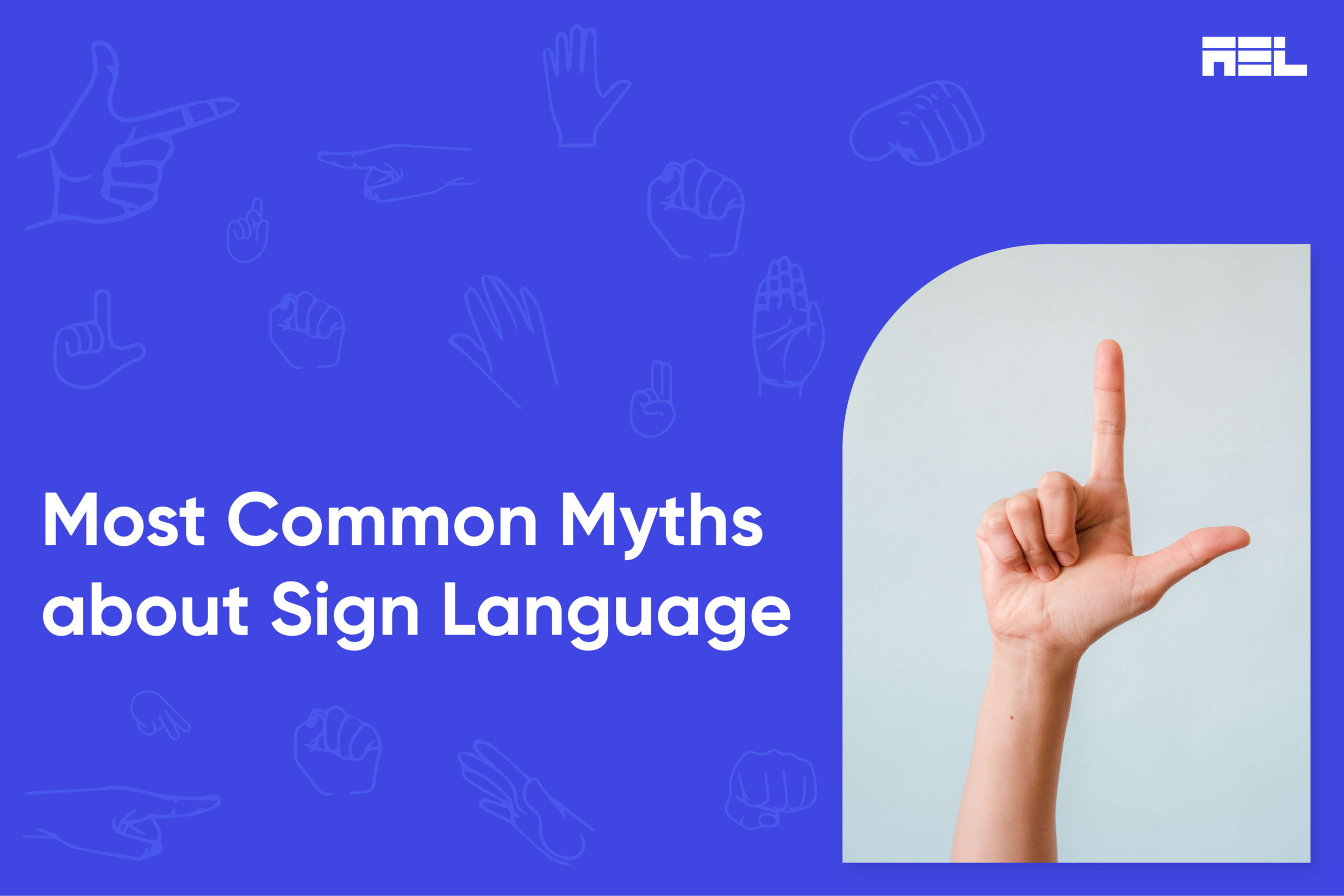The National Association of the Deaf acknowledges that ASL is important to the identity of the American Deaf community. The NAD is a frontrunner in the movement to spread awareness of American Sign Language and its value as a language, as well as initiatives to improve ASL education, interpreting services, and the lives of ASL users everywhere.
The National Association of the Deaf was founded in part to safeguard American Sign Language (ASL) and advocate for its use as a primary means of instruction for the education of the deaf community at large. Did you know that American Sign Language is one of the most common languages in the United States? However, there are still many myths surrounding it. Myths are part and parcel of every subject, but they become dangerous if they influence public policies or organizational attitudes toward inclusive hiring.
In this blog, we will demystify 5 common misconceptions about sign language.
Table of Contents
- 1 5 Common Myths About Sign Language
- 1.1 1. “If you do not know sign language, you may express the information in textual form.”
- 1.2 2. “People who know sign language can also lip read”
- 1.3 3. “Sign languages are similar”
- 1.4 4. “Directly involving the interpreter in your language”
- 1.5 5. “Sign Language isn’t an important part of digital accessibility”
- 2 Wrapping up
5 Common Myths About Sign Language
1. “If you do not know sign language, you may express the information in textual form.”
Grammar, syntax, dialects, and idioms are diverse in ASL and many other sign languages. These are real languages and sign language speakers may be considerably more comfortable signing than reading.
In American Sign Language (ASL), for instance, the word order is variable, and contextual cues allow speakers to discern the meaning of a phrase. A speaker of American Sign Language may sign “hungry, I,” which translates to “I am hungry” in spoken English; they may also sign “I hungry” or “I hungry I” to emphasize the phrase.
These grammatical structures do not equate precisely with spoken English phrases, and a native ASL speaker may be able to sign with more fluency. Although written English may be a useful means of communication for many ASL speakers, note-taking is often slower and may result in miscommunications.
2. “People who know sign language can also lip read”
Some people with hearing impairments can read lips, although studies show that only 30 to 45 percent of the English language can be discerned by lip reading. For realistic discussions with sign language speakers, lip reading alone is insufficient.
Of course, it’s vital to realize that no one accommodation will work for every deaf or hard-of-hearing (DHH) individual. It’s possible that some individuals would rather utilize an interpreter, while others may prefer to speak English directly. Respect the DHH person’s listening preferences if you want to have a productive discussion with them.
3. “Sign languages are similar”
Despite the widespread recognition of national sign languages, there may be little in common between them. While they may have a common understanding of the written word, native speakers of American Sign Language (ASL) and British Sign Language (BSL) may not be able to converse with one another in sign.
Regional dialects (or “accents”) differ within a single sign language. A speaker of American Sign Language from the South may use different terminology than one from the Northeast. The key conclusion is that there is no “correct” or “wrong” method to sign and that giving ASL tools will not suit all DHH individuals.
4. “Directly involving the interpreter in your language”
This misconception may be particularly irritating for sign language users. When interpreters are present, address the target audience directly; do not attempt to include the interpreter directly in the discourse.
In a medical environment, for instance, asking “Ask him if he has any allergies” accidentally excludes the patient from the discourse. Many ASL users will comprehend the situation’s meaning and may feel alienated. You are also increasing the interpreter’s workload.
Here are some tips to consider when you have to work with an interpreter
- Use a typical speaking rate. Do not attempt to talk louder; many sign language users may hear certain noises, but if the individual requests an interpreter, utilize one.
- Maintain eye contact. Eye contact is essential in Deaf culture since sign language relies on facial clues and body language to convey context.
- Provide any written materials to the interpreter in advance.
5. “Sign Language isn’t an important part of digital accessibility”
According to Success Criterion 1.2.6: Sign language interpretation is provided for all prerecorded audio content in synchronized media.
It states that pre-recorded videos should provide sign language interpretation to convey information about the audio content to people who are deaf or hard of hearing. People who communicate through sign language can understand the content faster and more accurately than through captions.
If you have native sign language speakers on your staff, providing interpretations for presentations and internal films may increase understanding, boost productivity, and foster an inclusive environment.
Wrapping up
Hopefully, our blog will unmask the common myths surrounding sign language and help you take the necessary actions to include sign language interpreters in your videos. Being accessible will always help you in the long run by enabling all users to access your website easily. AEL Data has 20 years of experience in document conversion. Our expertise in the field allows us to swoop in at any point and help you develop the best possible product.



